PIANO SOUND IN DIGITAL PIANOS – Does it sound REAL? Can digital pianos really reproduce the acoustic piano sound? Report 2023
UPDATED REPORT – June 1, 2023 – Can Digital Pianos reproduce a real acoustic grand piano sound? Before the acoustic piano was born, there was the Harpsichord. The harpsichord is a very cool instrument, and I have played a few of them over the years. These instruments are still used today in all kinds of music, but they only have one volume (loud) and cannot vary their sound dynamically from soft to loud (or tonally) based on the key touch velocity and movement, all of which is called “expression.” The sound is also “plucked” and tends to be a more staccato or choppy sound compared with a real modern day acoustic piano.

So then, what is a “real” piano sound, and how would you know if a particular digital piano had a “real” authentic, natural piano sound or not? One of the most common questions I get asked by people, is…” tell me what piano (in a certain price range) has the best most authentic acoustic piano sound that I can get?” Unfortunately, the answer to that question is not a simple one, and there are a few good reasons for that. First of all, acoustic pianos vary in piano tone because they are organic and use natural parts that can vary from one piano to another, one brand to another, one size to another, and so on. It also depends on the type of wood used in a piano, the type and weight of the felt hammers, the type of piano wire strings and the copper on those strings and how they are wound along with the wood soundboard and how that sound resonates through the piano from the soundboard. There are so many things that make up a “piano sound” that it can boggle the mind:).
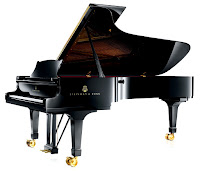 There are so many different acoustic piano brands and models available out there because of natural organic differences in the acoustic pianos from one to another, along with key action and pedaling differences. The variables in comparing one specific piano to another boggle the mind and, in a lot of cases, the pocketbook too:) In fact, when shopping for a real acoustic piano, a serious piano player who has good piano playing experience usually shops for and plays as many as 20-50 different acoustic pianos before that person settles on the right one for him or her:). The reason for such a long and involved shopping process is, as I already mentioned, the fact that every piano is different from the next although those differences can be very small or very big…it just depends on the organic parts built into that piano and how that piano sound vibrates through the soundboard and cabinet (there are many different wood soundboards and cabinet materials) and what you finally hear. It is true that the key action movement is very important to the outcome of the piano sound, but in this report, I am only dealing with the piano sound itself and not the workings of the key action, which is a complex topic that I have dealt with already in another report.
There are so many different acoustic piano brands and models available out there because of natural organic differences in the acoustic pianos from one to another, along with key action and pedaling differences. The variables in comparing one specific piano to another boggle the mind and, in a lot of cases, the pocketbook too:) In fact, when shopping for a real acoustic piano, a serious piano player who has good piano playing experience usually shops for and plays as many as 20-50 different acoustic pianos before that person settles on the right one for him or her:). The reason for such a long and involved shopping process is, as I already mentioned, the fact that every piano is different from the next although those differences can be very small or very big…it just depends on the organic parts built into that piano and how that piano sound vibrates through the soundboard and cabinet (there are many different wood soundboards and cabinet materials) and what you finally hear. It is true that the key action movement is very important to the outcome of the piano sound, but in this report, I am only dealing with the piano sound itself and not the workings of the key action, which is a complex topic that I have dealt with already in another report.
A piano sound starts out with the hammer striking the string or strings with the vibrations of those strings resonating through the wood soundboard and wood piano cabinet and then the sound of those strings behaving in all kinds of ways with their own overtones, sympathetic vibrations of other strings that you did not play and how those un-played strings make a sound because of the played strings and how those played strings interact with other strings in different frequency ranges that may or may not have been played. The piano sound that you’ll hear also depends on how you strike the key (fast or slow, hard or soft) and how much damper pedal you use to sustain those notes (including the damper position on each note), and how the sustained tones interact with each other.
With approximately 230 strings in a full grand piano that are plain steel and copper-wound steel strings of different lengths and sizes and different vibration amounts and vibration times along with a variety of dynamics, the piano sound is very complex, to say the least. So when a digital piano manufacturer tries to duplicate the acoustic piano sound in their digital piano(s), it is definitely not easy, and each model of a digital piano will have some deficiencies when it comes to reproducing a real acoustic grand piano sound. No matter how the digital piano manufacturer tries to capture or reproduce that original piano sound and put it into the digital chip of the digital piano, the sound itself still needs to come out of an internal speaker system in the piano (or an external speaker system) whereas a real acoustic piano sound emanates naturally from wood, through wood, and resonates organically and naturally with no speakers. The digital piano speaker system needs to be good enough for the piano sound chip to be heard as naturally as possible given the limitations of technology.
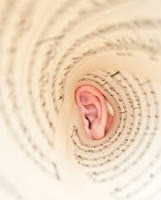
When you are shopping for a digital piano, depending on your acoustic piano playing and listening experience, you could be the type of person who is easily satisfied with even the most basic 88-key digital piano simply because you really don’t know what a real piano actually should sound like. You also could be very picky and have extremely high expectations and not be easily satisfied with any digital piano no matter how good it may actually be otherwise. As a long time piano teacher, guitar teacher, and pro musician, I have played literally thousands of acoustic pianos and acoustic guitars and I understand the differences in tone between one instrument and another and I also realize that the piano sound that you may gravitate towards also has to do with the kind of music you will be playing along with the ways your ears react to sound…piano music in particular. Your overall hearing ability and the frequency range of sound you actually hear and how the sound affects your ears will also play a part in the piano sound that you will ultimately want to have in your piano. Yes…at the end of the day the piano sound you’ll be liking is really dependent on all of these things
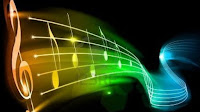
Some people like a bright, lively piano sound, and some people like it to be more mellow and subtle, while others like a more complex colorful piano sound, and still other people like a simpler plainer tone. It never ceases to amaze me (although I should not be surprised) how some people can like a piano sound from a digital piano that is actually a very poor piano sound as compared to almost any real acoustic piano, and yet some people like it! These kinds of people must have either no real experience playing quality acoustic pianos or they are just easily satisfied with the piano sound they hear out of a poor quality digital piano because their expectations are so low.
To make this as simple as I possibly can, there are some digital piano brands that will give many people a satisfying piano sound playing experience and there are other brands that will not do that…although there will be people who, because of looks and lower price, maybe satisfied with poor quality piano sound because those people don’t know any better. However, there is NO digital piano from any manufacturer right now that absolutely reproduces the piano tonal range and tonal complexity of a real high-quality acoustic grand piano. The best new digital pianos out there are from Yamaha, Roland, Kawai, and Casio, Samick, and Korg. But a lot of piano sound authenticity that you will get out of a digital piano also has to do with your price range and what you can afford to purchase.

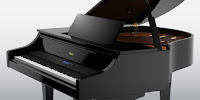
Just to be clear, there are two kinds of digital piano sound technology. One of them is called “sampling” which is taking a sample recording (using multiple microphones to record that sample) of the piano sound of a real piano when being played on each key or group of keys and transferring that sample into a digital piano chip installed in the digital piano. A sample pf piano sound does have limitations because it is a smaller (approx) slice of the actual sound and then it is made to repeat over and over so that you get a full-length sound over time in the digital piano for each note played. However, there are many digital pianos that don’t have sampled piano sounds for each note. Instead, that manufacturer does it the less expensive way and samples one note of sound in the real piano and then electronically stretches or tunes it up for the next 3 notes/keys or more in the digital piano instead of individually sampling every note/key in the acoustic piano. This less-expensive stretching
process can and does reduce the authenticity of the piano sound you hear in the digital piano and also helps that manufacturer save money by doing it that way.
Finally, the top brands of digital pianos have features on most of their models which allows you to change the piano sound in a number of ways and to customize it to your particular musical tastes. This would include editing the tonal qualities of the piano sound such as changing the brightness or mellowness of the sound, the touch response of the piano from light to heavy and in-between, the reverb and resonance sound, the EQ frequency response, and on some digital piano models you can adjust the tonal and tuning character of the individual notes on the piano just like a
tuner-technician would do on a real acoustic piano. So there are ways to customize some digital pianos to sound a bit different than the default sampled or modeled tone of that piano. Plus, you can hear the piano sound through stereo
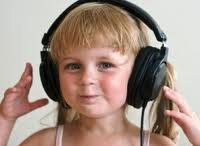
headphones which you obviously cannot do with an acoustic piano. Hearing the piano sound through headphones can be an amazing experience because you can better hear the nuances of the tone since they are so close to your ears as opposed to hearing the sound strictly through the internal (or external) speakers of the piano.
When someone asks me “please tell me which digital piano in my price range has the most realistic piano sound,” at this point hopefully you can understand that the answer to that question may not be as simple as you would otherwise think it would be. Good piano sound and playing it on a great piano is a beautiful, inspiring, and wonderful experience. But the bottom line is…digital pianos are not perfect reproductions of acoustic pianos no matter what the piano manufacturer would want you to believe. But it’s also important to understand that real acoustic pianos are also very different from each other (different acoustic brands & models) as I mentioned earlier because they are all organic instruments. So your personal piano playing and listening experience is predicated on which specific acoustic pianos you have been exposed to and also on your piano playing skill level. What one person may think an acoustic piano should sound like in a digital piano, another person may think it’s something else, just depending on their piano experience. The real question people have in wanting to own a good digital piano is…”will I enjoy playing it and listening to it and will it sound real to me?”
If you want more info on new digital pianos and LOWER PRICES than internet discounts, please email me at tim@azpianowholesale.com or call direct at 602-571-1864.

















I've found it so heartening to read through this account. Tim so obviously has a true understanding of pianos to be able to properly discriminate between digitally produced sounds and the complexities of a real acoustic piano.
I started at an early age, experimenting with electronically produced sounds and soon realised – as Tim has said here – that each note would need to be sampled in its own right to simulate more closely the piano sound. But it would be extremely difficult to reproduce the full characteristics caused by resonances and harmonics within the sound board and casing. A REAL piano reacts in accordance with other strings held open at the moment of striking a note. So this makes it all very complicated to analise.
I have played both types of instruments and enjoyed many hours doing so, but I get greater pleasure by playing a WELL TUNED REAL piano because it reacts as if it has a soul for its player to connect with. This "soul" reacts to the type of music being played. But it's not all musicians who are sensitive to this I've found.
However, as much as I would miss playing on a real piano, then I would most certainly choose a digital piano if I were living at some remote place such as an island for example where a piano tuner would not be easily available. Provided of course, I had a reliable supply of electricity. And if I lived in an apartment then I would also be glad to use a digital piano so as to listen with earphones to isolate my sounds from other residents. I've also found my digital piano useful when working with music software through a computer.
So, it's horses for courses; choose what is best for you and enjoy your life with music.